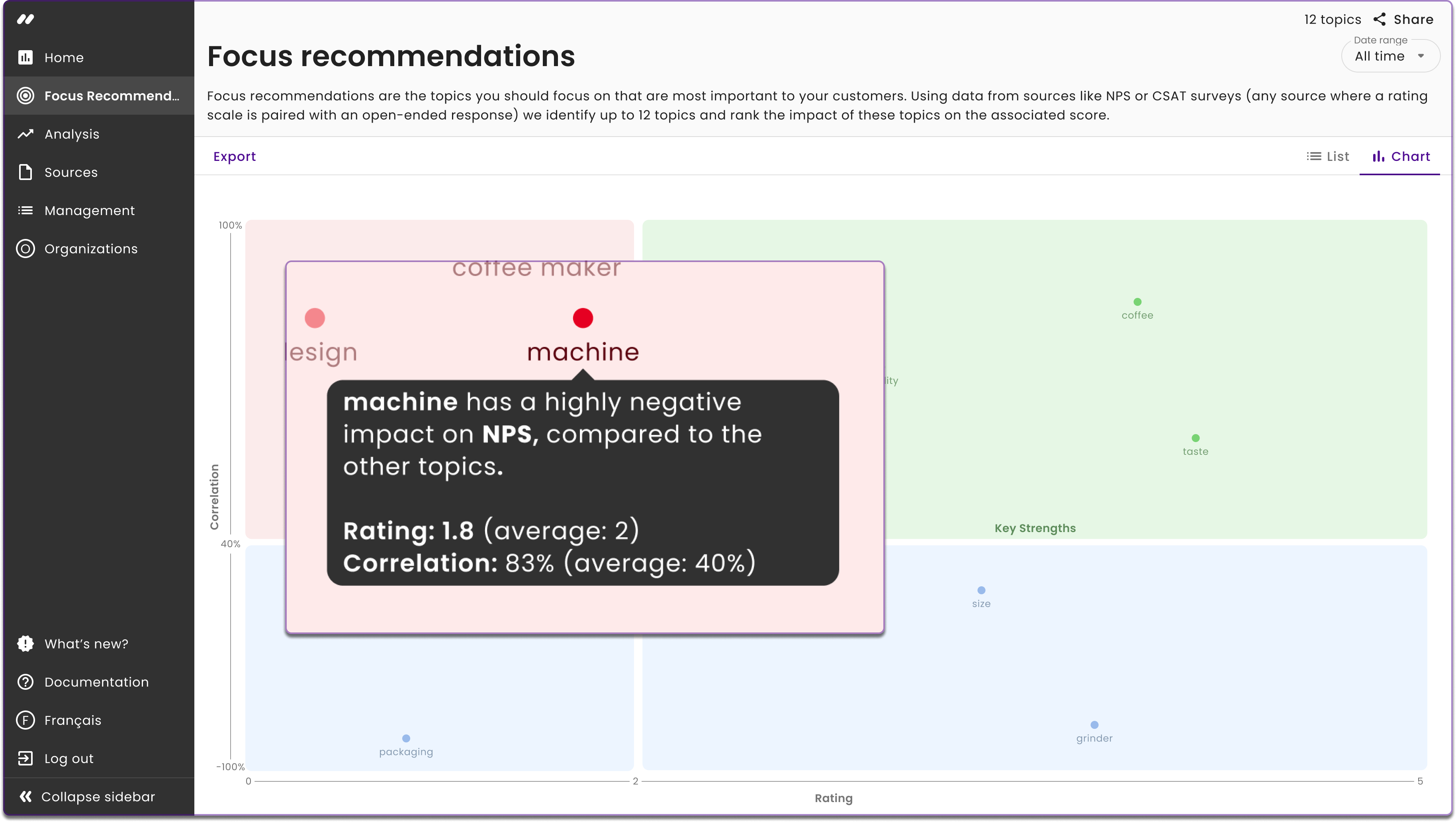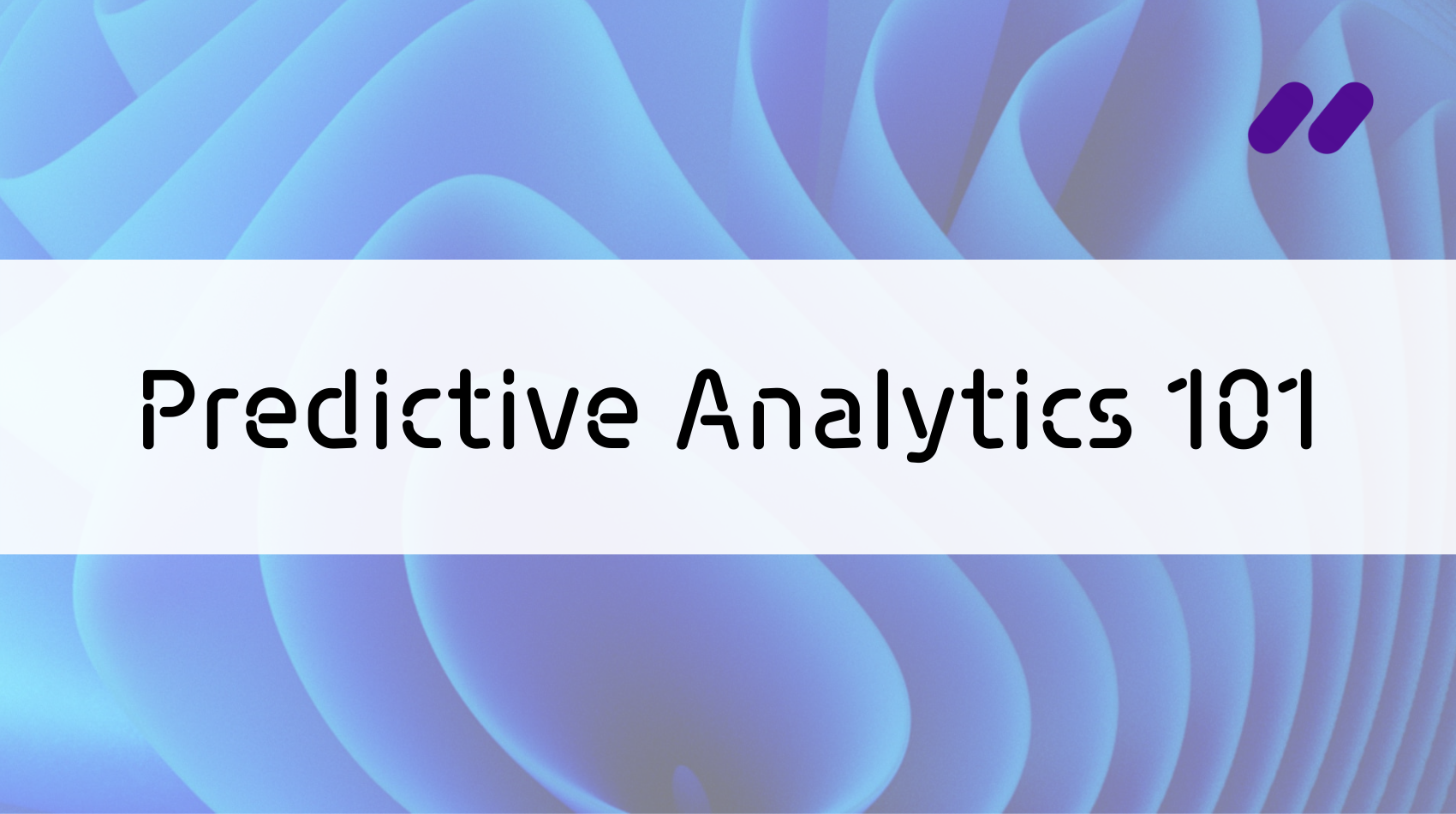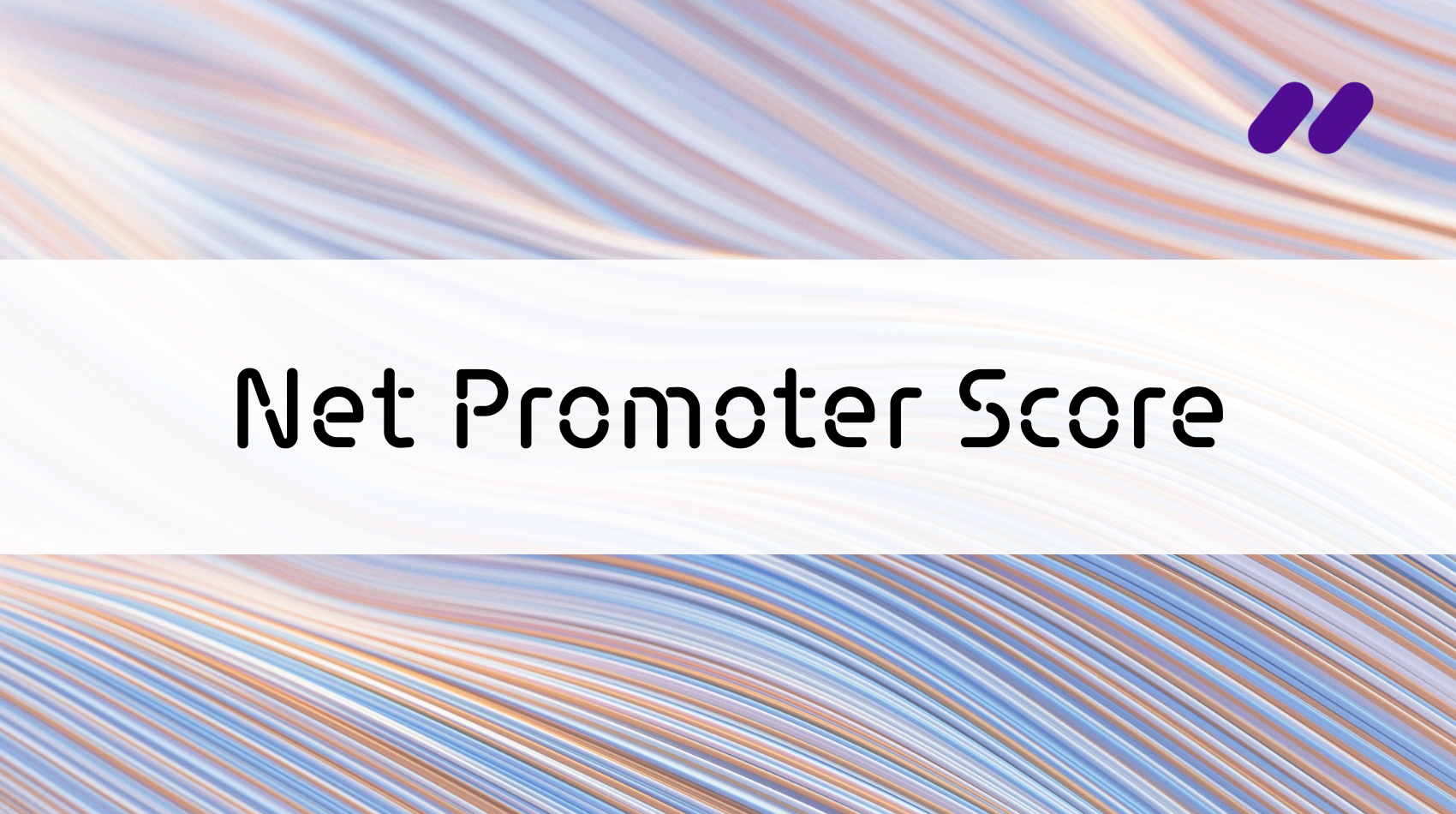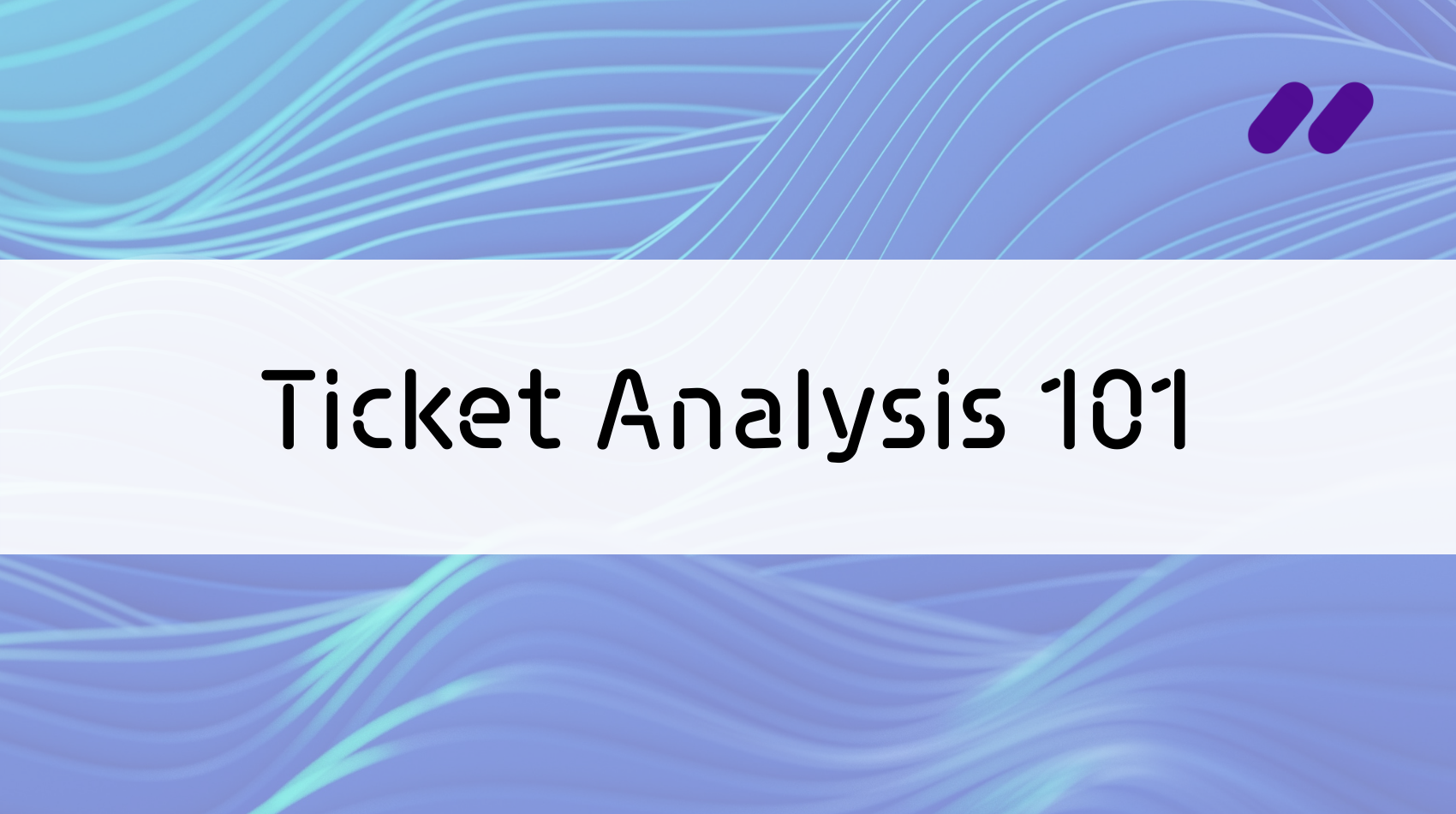Companies across all industries have been gathering and storing data for decades, and new skill sets have emerged to use it to advance business goals. As a result, having a data science department is now standard practice for many industries.
However, despite the neverending torrent of data generated by users, most companies are using it reactively. For example, customer surveys describe the completion of a customer experience, and companies react to those results.
What if companies could predict how a customer will feel about the company’s products, website or app, and overall customer experience? Companies could make improvements proactively rather than reactively.
Predictive analytics is poised to revolutionize how companies use data. It’s arming data scientists with the ability to look ahead at future possibilities rather than describing what’s already happened. So it’s time to explore predictive analytics, why it’s important, how it works, and even discuss real-world use cases.
1. What Is Predictive Analytics?
Predictive analytics uses machine learning models to leverage existing data to predict an unknown future fact or event. Essentially, it leverages past data to predict future data.
A simple example of predictive analytics is when auto insurance companies use historical data to determine if a specific person should be insured and how much their premium should cost. The historical data includes an individual’s driving record, but it also leverages industry-wide data related to their demographics, such as their age and the car they drive.
However, advanced modern predictive analytics uses complex machine learning models to predict increasingly complex events that were difficult or impossible in the past. As a result, data scientists can now leverage predictive analytics to arrive at intricate conclusions that can inform product development, website design, and even business strategies.
2. Why Does Predictive Analytics Matter?
Predictive analytics is becoming an essential part of how modern businesses operate. It’s no secret that gathering and storing data can help companies understand past trends, but now customers can look to the future by using that same data.
Advanced predictive analytics can impact nearly every aspect of a business if adequately utilized. Data scientists will need to determine the suitable predictive model and identify which data should be used. Then, data analysts will need to review the results to create specific, actionable insights.
3. What Are the Types of Predictive Analysis Models?
Using the correct predictive models will determine the accuracy of predictive analytics, which impacts the value of the insights it generates. Let’s examine a high-level view of standard predictive models. Be aware that this is not an exhaustive list, and there are subcategories for most of these models.
Linear Regression
As the most famous predictive model, linear regression creates a graph of all known data and then draws a line that travels through the center of the data points. Then, the model predicts future events based on this line. Even though it’s widely used, this model can be limiting for more complex tasks since it only uses numerical data.
Text Mining
Search engines are a simple example of text mining. A search engine indexes web pages and predicts which web page it should show you based on your keywords. Sentiment analysis is a more advanced example of text mining. It uses historical reviews and survey results to predict how future customers will feel about your product, service, and the overall customer experience.
Optimal Estimation
This predictive model uses observational data about a given situation to predict the outcome. For example, a manufacturer might use industry-wide data to predict when equipment should be serviced and which tasks will help extend its lifespan.
Clustering Models
There are many types of predictive models that fall within this category. Essentially, cluster models analyze various data types and look for similar elements within the data. For example, a fast-food chain might use clustering models to help determine where to open new locations based on income level, home values, and proximity to colleges.
Neural Networks
The structure of brains inspires this complex predictive model. A neural network processes historical and current data and looks for patterns and trends within them, which is similar to how a human brain operates. For example, a neural network predictive model can use data from an eCommerce website to understand which products a customer might want to purchase in the future or suggest complementary products for a customer’s current purchase.
4. What Are the Business Use Cases for Predictive Analytics?
Predictive analytics is transforming nearly every industry and department. The machine learning models mentioned above can be leveraged to help businesses in seemingly countless ways. Common business usage of predictive analytics includes:
- Marketing departments can leverage predictive analytics for marketing campaigns and throughout the entire customer lifecycle to provide a positive experience and tactfully cross-sell products.
- Businesses across multiple industries can forecast customer demand and optimize supply chain distribution.
- Human resources can assess the likelihood of a candidate accepting an offer, including altering the offered salary to improve the chances of acceptance.
- Financial institutions can understand the creditworthiness of an individual or detect and block fraud.
- Healthcare facilities can understand how to best care for patients with specific ailments.
5. How Do You Use Predictive Analytics for Customer Experience?
Providing a positive customer experience (CX) has become exceedingly important. A positive experience results in glowing reviews and repeat business, while a negative experience can severely harm an organization.
Let’s go over a brief overview of how a business can use predictive analytics to improve its CX. The journey begins by gathering all applicable customer data, including sentiment analysis of surveys and reviews, purchase history, and overall customer behavior. The goal is to create a rich dataset that transcends simple survey results.
Then, an appropriate machine learning model is selected. Alternatively, multiple models might be used. The goal is to understand exactly what influences the customer experience at every stage. These models predict overall customer satisfaction and financial outcomes such as potential revenue and repeat business.
Finally, actionable insights are derived from the results of the machine learning models. These insights can impact nearly any department in an organization, ranging from product development to customer service. Unlike survey-based analysis, predictive analytics can deliver insights that catalyze immediate action to improve the CX of future customers.
6. What’s Different about Keatext’s Predictive Analytics?
What if you and your team could instantly zero in on the most impactful action items for your business? Our predictive analytics module seamlessly serves you the most critical areas for business improvement from your feedback – saving you major time, ensuring ROI, and giving you a straight and strategic line to taking your most impactful action.
Focus recommendations provides the critical action items from your customer feedback, helping you zero in on opportunities that directly impact NPS, CSAT, or star ratings – without spending time wading through analysis and insights that may or may not really matter for your business.






